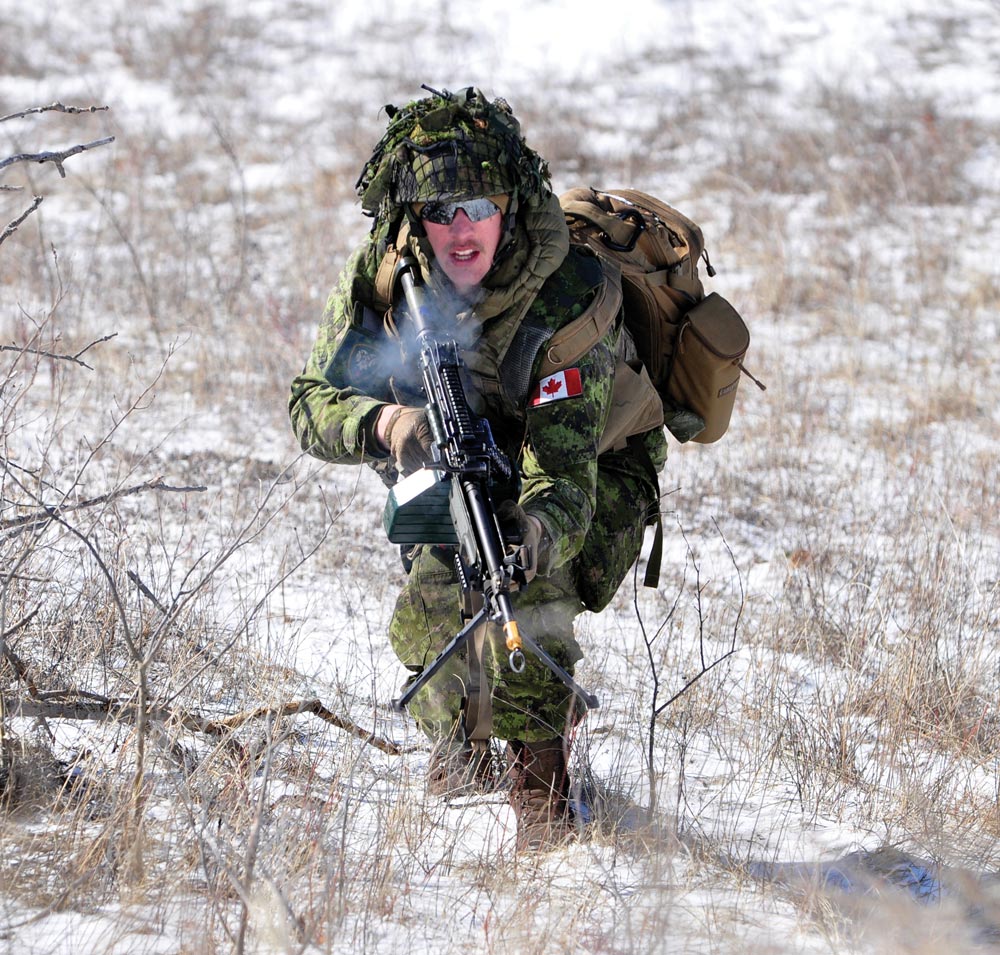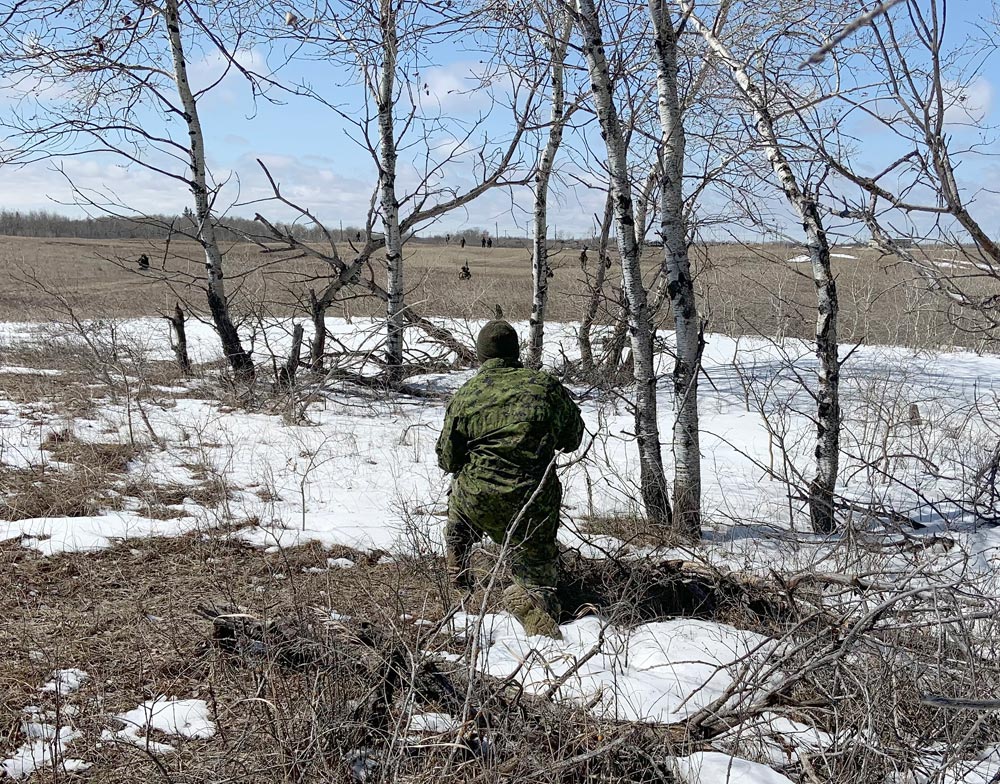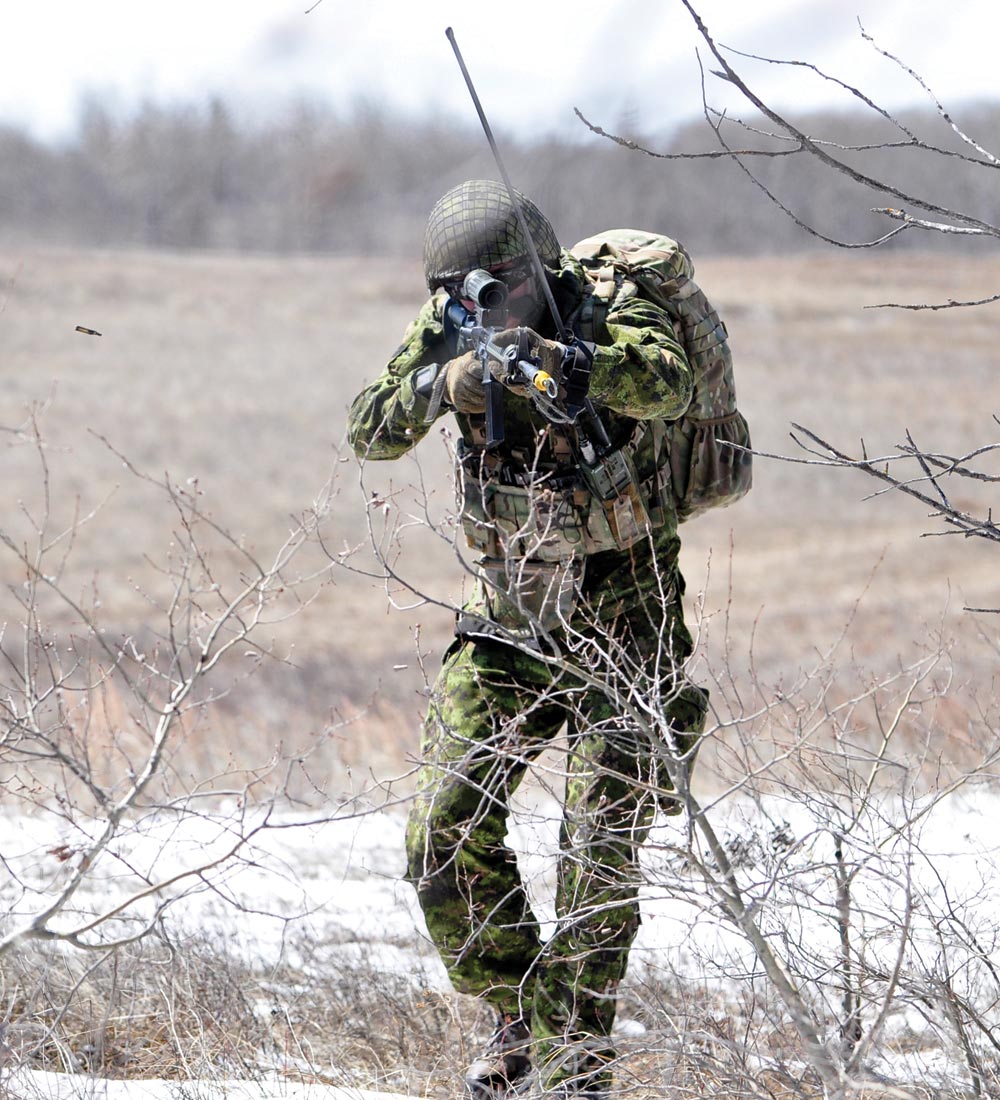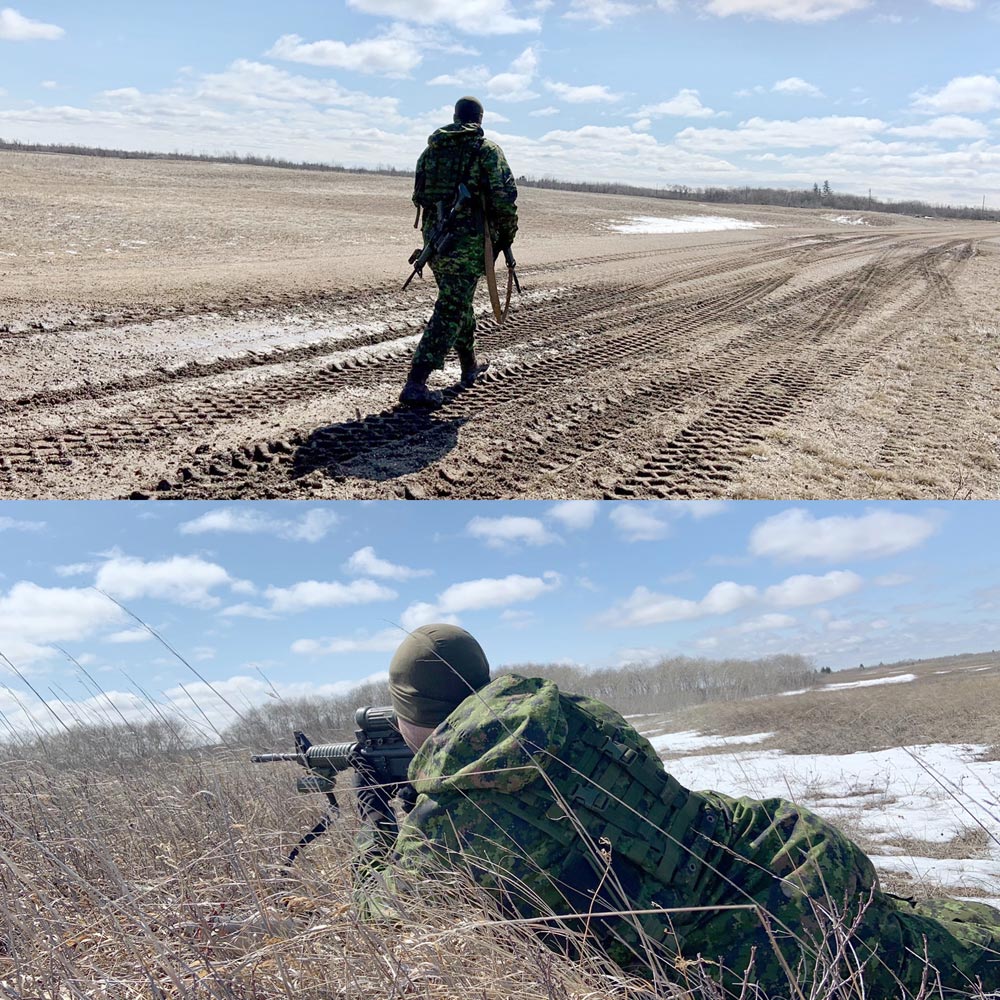

Jules Xavier
Shilo Stag
Spending time in the RTA with 2PPCLI gives media types an opportunity to observe the infantry hone their skills.
Such as working on section attacks, with B Coy involved in the annual Ex KAPYONG RAMPART.
Ops Training Officer (OTO) Capt Trevor Watson is our guide on this day, with about 25 Patricias involved on a sunny day, with crunch-like snow blanket covering the ground. There are no LAVs involved.
For the layman, section attacks are effectively combine co-ordination, firepower and aggression in order to remove enemy-held positions.
On this day, Capt Watson had his soldiers do an array of section attacks, using just a C9 machine gun or C7 rifle as weapons. There were no mortars or M777 artillery support.
And unlike what you observe in Great War colourized film online where soldiers marched forward upright, bayonet at the ready for close contact fighting in the enemy trenches, today’s Patricias are more stealth once initial contact is made.
There’s no charge into the enemy machine gun fire — instead, soldiers establish a fire base first, then section commanders ascertain how they want to engage based on terrain and cover, according to Capt Watson.
This might mean a forward section attack, or one which sees soldiers attempt to flank enemy positions from left and right. Again, using the terrain for cover.
Infantry section tactics were born during the tactical stalemate of the First World War’s trench battles, and have been refined during the Second World War, Korea War and more recently, the Afghan War.
The section attack still plays a part in modern warfare, even with increased reliance on modern weapon systems and mechanized forces. But on this day, it was strictly soldiers working on their tactics without having the luxury of dismounting from a LAV.
Capt Walton, who acted as “enemy” while B Coy moved across the RTA terrain, said the various attacks during training also gave new section commanders an opportunity to draw on what they have learned from senior NCOs, and share with newer infantry soldiers.
Section attack training has evolved, too, with an attack based on manoeuvre, tactics and aimed fire to speed, simplicity and volume of fire. As always, a soldier is taught to adapt and improvise depending on what they encounter in battle, with Afghanistan’s terrain a lot different from what our great-grandfather’s and grandfathers experienced fighting in Europe.
In the past, a 10-man dismounted infantry section was the norm, and basis for tactical training of Canada’s young Army leaders. The section consisted of the section commander, leading a rifle (assault) group of six riflemen, and a 2IC controlling a fire support group of two automatic rifles.
This gave the section commander a number of tactical options, which required this individual to read the ground, extrapolate likely enemy threats and actively control the deployment of firepower and assault elements to best meet anticipated threats.
Under effective fire, the section would often move independently under the section commander’s direction, until the fire support team was in a position to provide continuous suppression on the enemy while the assault group manoeuvred for a final charge with grenades and bayonets.
In an ideal scenario such as was provided in the RTA, the fire support group was placed in a concealed fire position from which it could suppress the enemy position until the assault group had moved to an assault position.
With good use of ground in suitable terrain, like the RTA provides, the assault group might never be under direct fire of the objective enemy until the final rush. On this day, flanking of “enemy” positions for the soldier allowed them to take their objectives.
Capt Watson said post-section attack meetings are important for feedback, not only from his perspective, but also the section commander hearing from the observing senior NCOs on the ground who move alongside the soldiers.
With the adage practice makes perfect, B Coy’s soldiers then moved on to the next objective with a new scenario to help hone their skills, especially for the newest soldiers added to the company. Practical training works best when it comes to section attacks, offered Capt Walton.



